From Thessaloniki to Paris
Maria Poliviou & Valentina Tsalampouni
Maria Poliviou and Valentina Tsalampouni from the Olympion and Warehouse 1 cinemas in Thessaloniki tell us about their visit to four emblematic cinemas in Paris: Le Mélies Montreuil, Le Balzac, Le Louxor and Le Studio des Ursulines.
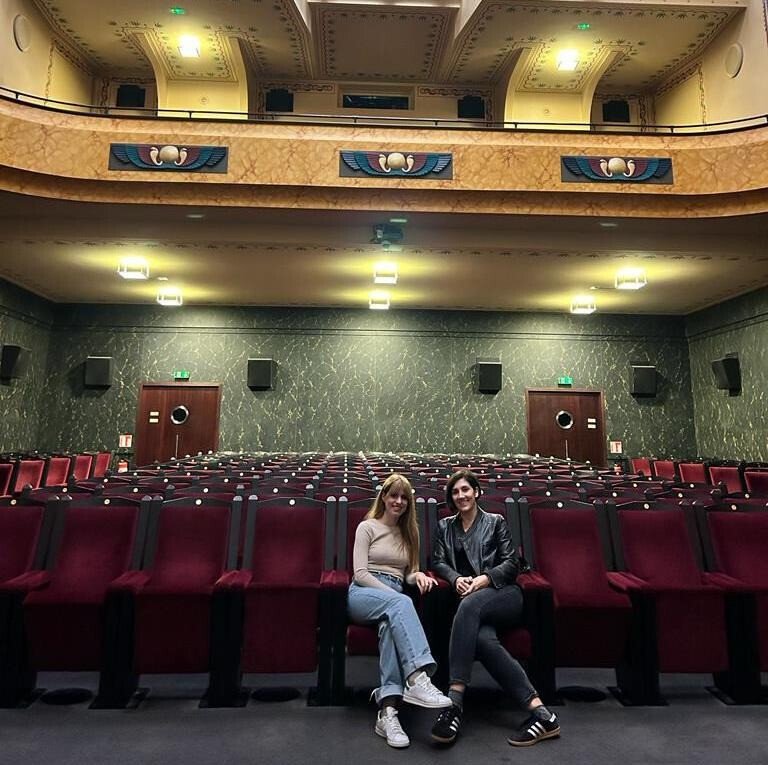
We met Stephane Goudet, the artistic director of Le Méliès, when he came to visit Thessaloniki in the spring of 2023 to deliver a masterclass in the frame of the 23rd Francophone Film Festival that was hosted in our cinemas. During his short visit we learned about Le Méliès, its unique programming, and the important role it plays in its local community. We quickly realized that our cinemas share many similarities, even though they operate in such different environments (non-profit, multi-screen and of significant importance to the community). We knew about the Next/Change program and were certain that it would provide the perfect opportunity to study Le Méliès in depth. Our aim for the exchange was to understand the essence of what makes Le Méliès such a lively cultural hub in Montreuil and see in which ways we could implement any such best practices to our own cinema.
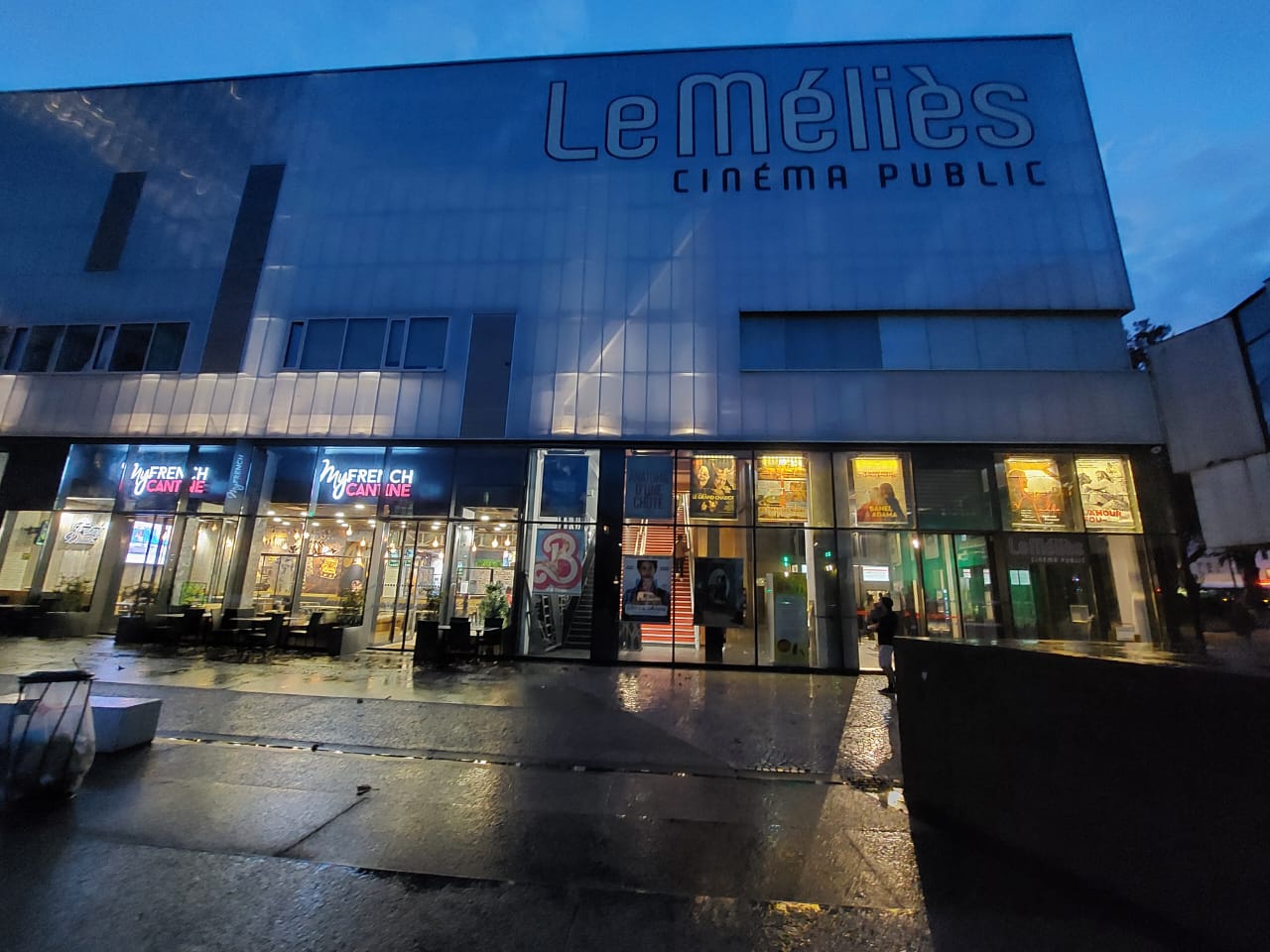
To experience Le Méliès from the perspective of the spectator and gain as much insight into its structure and operation, we made an effort to attend as many and as diverse screenings as possible. A Q&A with Michel Gondry hosted by Stephane following the screening of Le livre de solutions, a midday screening of an animation aimed at very young children, a screening curated for audience members with intellectual disabilities, a screening of an African film organized in collaboration with a local association and with the director present.
What we quickly realized was that the team at Le Méliès is curating a diverse, fully inclusive program of new and old films as well as special screenings, that has something for everybody. More specifically, they collaborate with plenty of associations to screen films and engage with the people. For example, there is the séance-senior twice a month where old people can watch a film and then enjoy some tea and discuss their experience, or new parents once a month can go with their newborn babies to watch a must-see in what is called Bébés bienvenus. In addition, there is the cine-relax once per month that we were fortunate to attend, where people with intellectual disabilities are welcomed to express themselves freely during the screening. Furthermore, they have plenty of screenings that cater to the visually or hearing-impaired audience. Finally, there is the circuit court program where they screen short films by filmmakers in Montreuil or films that were produced in the area, thus giving them the opportunity for their films to be shown on the big screen. As a result, parts and members of the community become visible to the rest, creating a stronger sense of community, with Méliès being the meeting point.
The programming as described above, along with the fact that the curators were visible and familiar to the audience (since in most cases they were present at the screenings, introducing the films or doing Q&As) created a relaxed and welcoming atmosphere for all.
This sense of ease and familiarity also translated in terms of space, in the simple and functional design of the foyer, the communal areas, the cinema halls - all details communicate that this is a space for its audience to inhabit, an invisible mediator between the audience and the films. They really do want their audience to feel comfortable, that this is their space, their cinema, their meeting point.
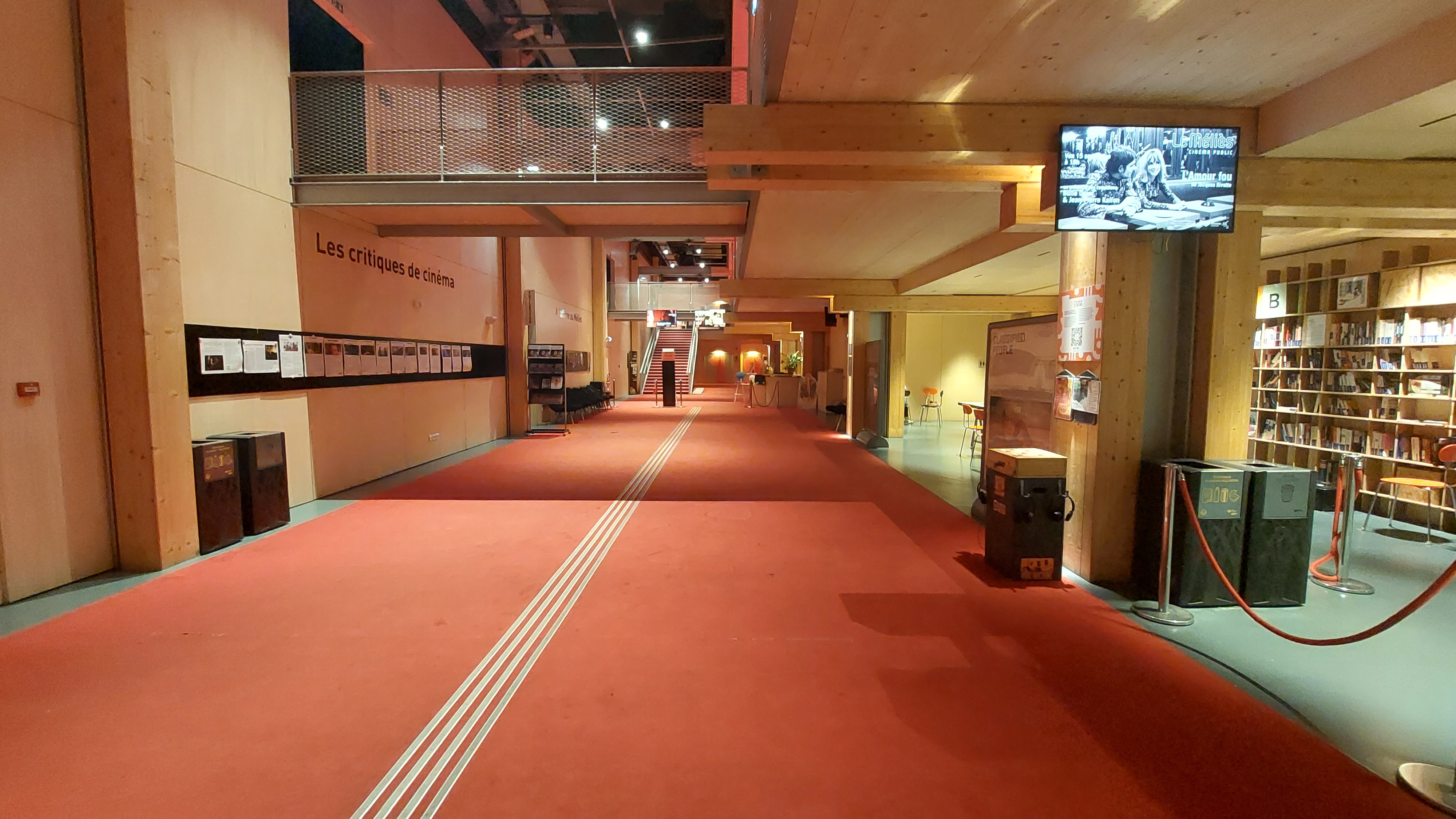
Le Méliès gives a big focus to their young audience. Alan Chike, who is responsible for the young audience program, dedicated a lot of time to thoroughly explain his work. He made sure we first understood the work of the state and the CNC, who prepared a program of carefully organised and curated selection of films for all levels of school with the aim for students to become familiar with film theaters and the art of cinema. Through a selective process, the Melies collaborate with schools and passionate teachers and as the students visit Melies for the duration of the program, they become familiar with the place and its people, and it feels like their cinema. Apart from the school screening, there are regular kids’ screenings divided by age. The program mostly focuses on smaller Art et Essai animation films while at the same time accommodate some big studio animation films. They also like to keep their young audience engaged by organizing as well the ciné-gouter where they offer a snack after the film and the ciné-workshop where a screening is followed by activities or even the first kid screening where at the end they give a diploma to remember this time. In addition, there is the cine-club where kids from high school are part of a cinema club organized by Alan where they, among other things, get to choose a film to play at the Melies and present it to the public. Their care towards the young audience is such that it reflects on the overall performance of the cinema as it came to represent 1/3 of the admissions.
Our visit to Le Melies left us inspired and motivated to create an even more diverse offering of cinematic experiences for our audience. One of the first ideas we plan to implement is the baby-friendly screenings of new films. We will choose the “must-see” film of the month which will be screened in conditions suitable for newborns to be in (with lowered sound and dimmed lighting). This is a completely new concept in Greek cinemas, which we hope to be able to establish.
In regards to young audiences, we were planning to completely rethink our approach for the next season - for starters we plan on dividing the audience in many sub categories with the aim of offering more tailored content to each age group. The very in-depth detailed meeting we had with Alain will certainly prove to be extremely valuable. Greek cinemas by no means have the same level of support from the government, but the way that the program for Jeune Public is structured can serve as an excellent guide and inspiration.
During our cinematic week in Paris, we had the opportunity to visit a few other very well-known cinemas as well, members of Europa Cinemas, and to have a discussion with the directors about their vision and practices.
We first met with Corinne Honliasso, the director and programmer of Le Balzac. This cinema is located at the heart of Paris in the Champs Élysée area. Operating since 1935 Le Balzac is one of the last cinemas in this once very cinematic neighborhood that used to count 20 cinemas and now is down to 4. Le Balzac is a beautiful space with its cozy bar and its retro halls that welcomes the audience to watch a very well curated program. That is also Corinne’s priority, the audience to trust Le Balzac for its program and to have a close relationship with the audience, as she continues in the same spirit of her predecessor Jean-Jacques Schpoliansky who was also very visible to the audience.
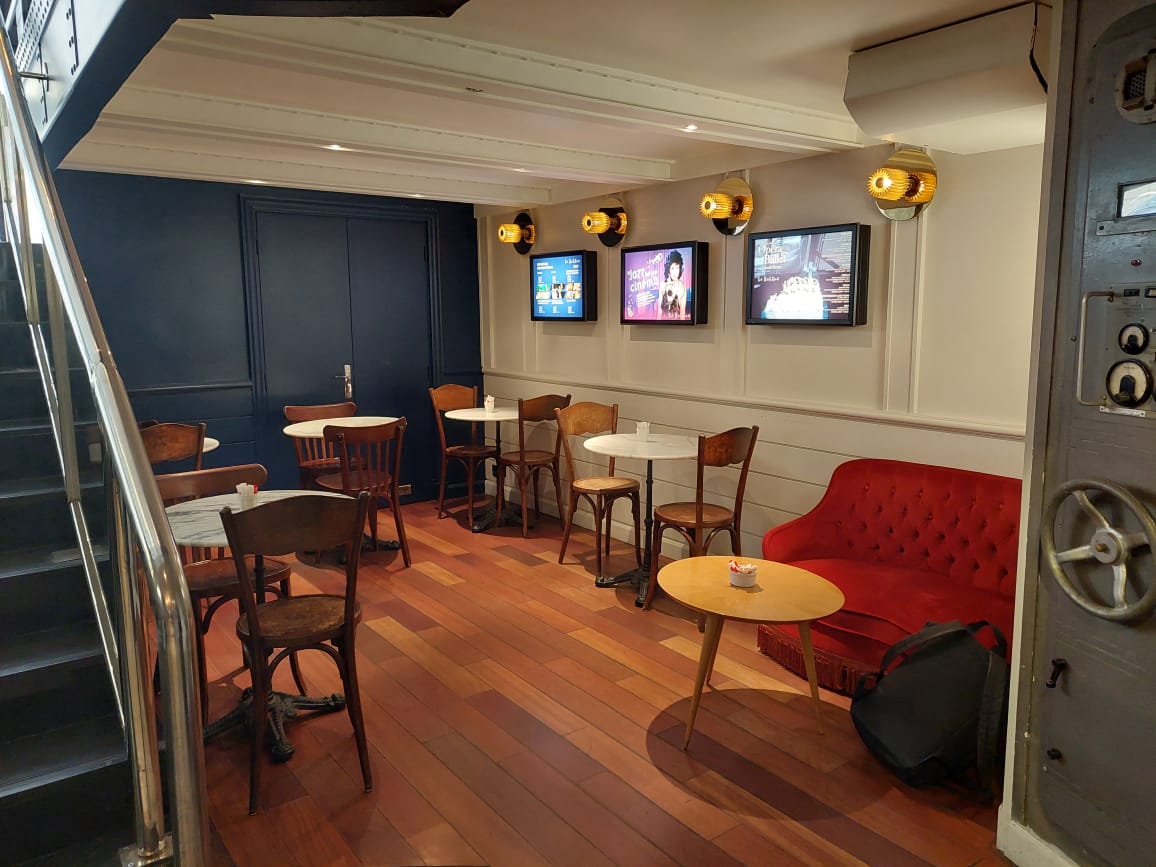
Our next stop was the Louxor where we met the director Emmanuel Papillon, talked about the history of the cinema that counts more than 100 years, and it re-opened in 2013 after it was closed for 30 years revving the old Egyptian aesthetic while keeping it modern. He then told us that Louxor’s main mission is to be a cinema du quartier (local neighborhood cinema) where the people living in the area come to watch a selection of the best films of the week. Mr. Papillon underlined the importance of knowing very well the area where the cinema is located and creating an identity based on that.
Finally, we concluded our journey at Studio des Ursulines where we talked with the director, Emilie Nouveau. Les Ursulines also has a great history of almost 100 years. It was first created with the purpose of screening arthouse films that could not easily find a place in the 1920s and today continues this differentiation by being the first and only cinema in France specialized in young audiences. This one-screen cinema has kept the aesthetic of the old times while at the same time feeling modern. There is a red curtain that hides the cinema screen and when it goes up it gives the signal to the kids that the show is about to begin and they are entering the magical world of cinema. Of course, due to the nature of the cinema, they work a lot with schools but they also curate a program outside school for kids of all ages through regular screenings, as well as cine-clubs that also contain activities and workshops for every age and host along with other cinemas in Paris a film festival for young audiences.
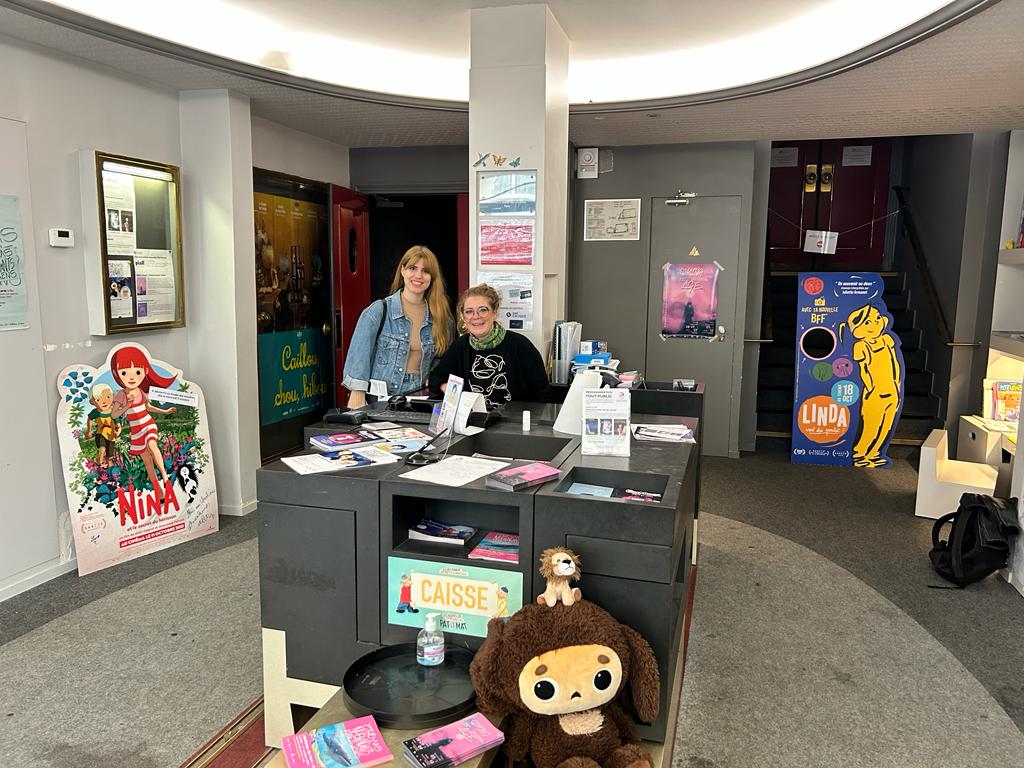
All in all, our visit to the cinemas in Paris through the Next/Change program proved an invaluable experience that gave us so many ideas to implement in our cinemas. And of course, this program also gave us the opportunity to meet with very interesting colleagues that we will keep in touch with.
Maria Poliviou & Valentina Tsalampouni (Olympion & Warehouse 1)
December 2023
__
